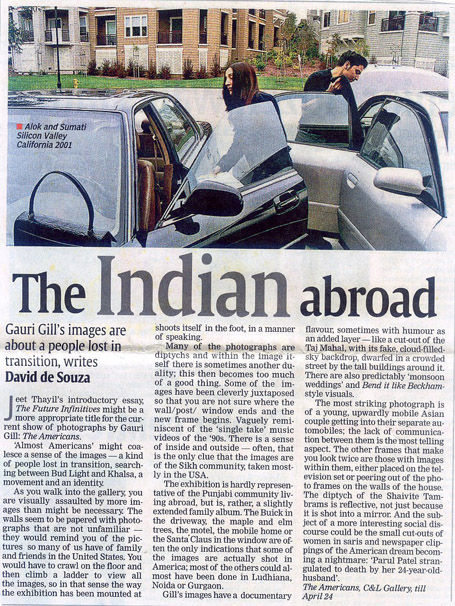Naveen Jindal has a lot to teach us. And a lot of us one billion and counting have him to thank, that you can fly your national flag with honour and dignity is not a birthright as you might have thought at least until a year ago. It was in 2004 that the Supreme Court vindicated Naveen Jindal’s long battle with the Union of India to his and your rights. This link (http://www.rediff.com/news/2001/jun/13spec.htm) will inspire you as much as the Tiranga did Jindal and fill you with joyous hope that an individual with a magnificent obsession can make a government pennant truly into a national flag.
The exhibition Tiranga on currently till Sept 30th at the Piramal gallery might be summed up by a visitor’s comment, ‘good effort’ is generally an enthusiastic put down that tries to sound positive and patronising when one is less than inspired. For the most part the images are cliché despite having some of the more famous photographers participating. Contrasting is the invite which is stunningly graphic.
There are flags being sold in the streets, hoisted over Parliament, painted on the back of trucks and cabbies, saffron white and green vapour trails at fly pasts, the most obvious interpretations, more documentary than interpretive, the only subtle image is by Udyan Sarkar where there is a reflection of the tricolour in a woman’s eye. Ajeeb Komahi is the only one who has tried to make some sort of interpretation albeit amateurish with children holding a bicycle wheel against an orange and white laundry line with foliage foreground.
The exhibition however is an important journalistic exercise in recording the use of a national icon. Rajeev Sethi’s quote is by far the most insightful and personal amidst all the patriotic brouhaha. He sees no disrespect in the use of the flag everywhere, for the images of gods are omnipresent why not the flag, he sees the use/abuse and disuse of icons as indicators of cultures. ‘For me’ he says, ‘ the change of icons is not a concern – but the level of faith’. This should come as solace to a fashion designer who recently was upbraided for her politically incorrect use of the tricolour on the ramp.
Prashant Panjiar has some images of Jawans raising the flag after a battle but that will forever be compared with the iconic Joe Rosenthal classic at Iwo Jima. The point would be to create images that burn into our own collective unconscious. He has a wonderful image that treads that territory of Mother Teresa’s coffin being covered in the Indian flag and in the foreground are heads of state, Hillary Clinton and Sonia Gandhi, bringing some irony to the issue of nationality by adoption.
There are many images of people making flags but the one that might be most prophetic is by Bhomik Shah with disfranchised street children selling flags at the intersection.
Ram Rahman might add a visual verse to the famous Sting ballad by being an Indian in New York, his images in black and white of the Indian flag being traded by an American in a flea market and the surrealistic sight of seeing an Indian nationalistic procession in Madison change the context and makes one look inwards to check our own tolerances of how we might reciprocate.
If the exhibition provokes us to ask the question ‘who is an Indian’ especially in the context of seeing saffron and green flags flying separately it would have succeeded. White is the presence of all colours.
